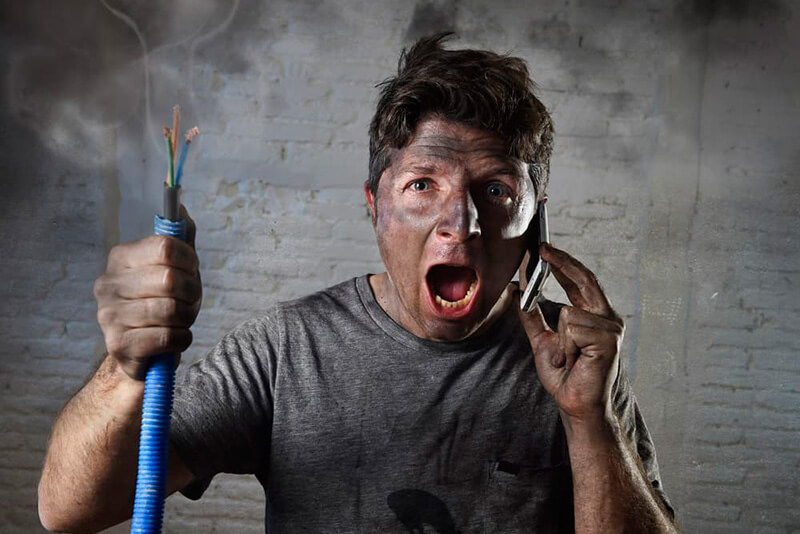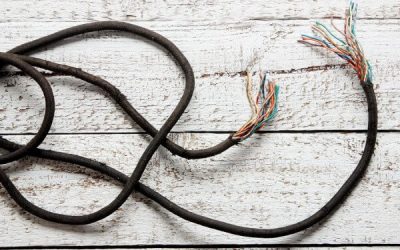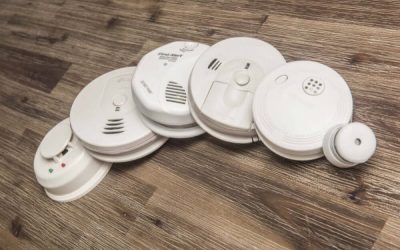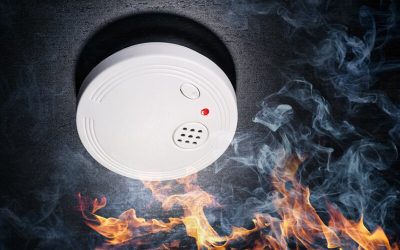Thankfully electrical emergencies are few and far between in Australia – but they still happen!
Electrical emergencies range from small power failures or a burnt power outlet to fallen power lines and electric shock.
This article covers what to do in the following electrical emergencies:
- If someone gets an electric shock
- If there’s an electrical fire
- If there’s fallen power lines
- If your property gets flooded
- If your power keeps tripping
- If your power points are burnt
- If there’s a power outage
Read on and learn how to best manage common electrical emergencies and what you can do to keep yourself safe in future!
If someone gets an electrical shock
Electrical shocks happen suddenly and unexpectedly. It’s important to keep a clear mind and follow these steps to best help a victim.
What to do:
If the electric shock was momentary, check that the person is responsive and get them to immediately move away from the source of the shock.
Don’t touch anyone going through an electric shock as you may also receive an electric shock. Don’t touch the source of the shock yourself.
If the shock was major or the person is disoriented or non-responsive, immediately call for medical help by calling 000.
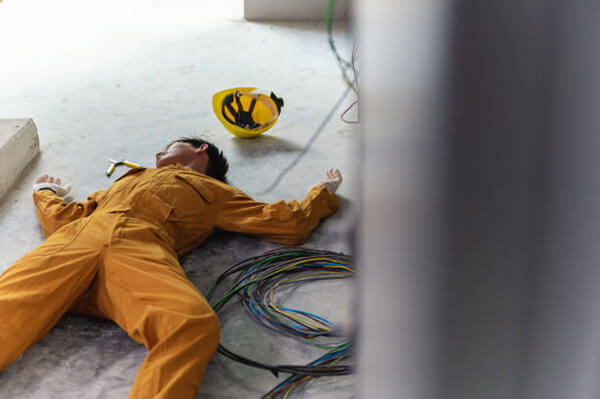
1. Turn off the power supply
If the electric shock is sustained or there’s still a danger of electric shock, locate the power source and, if safe, turn it off. If you cannot find the local power switch, turn off the main breaker at the switchboard.
2. Safely distance the individual with a non-conductive object
An individual receiving a continuous electric shock has unwittingly become part of an electrical circuit. An unresponsive individual may still be ‘live’ and present a risk to you if you touch them. Be wary that wet areas can conduct electricity.
Therefore, if safely possible use an object to separate the person from the circuit. DO NOT TOUCH THEM with your bare hands as you too will become another place for electricity to flow too. Using something long and wooden or insulated, such as a broom or PVC pipe (whilst maintaining your distance) to disconnect them.
If you’re 100% sure the electricity has been turned off and there’s no battery devices causing the shock, then you can get them to a safe place normally. If someone has suffered a big fall, it’s best not to move them in case of spinal injury.
3. Call emergency services (on 000):
If the electric shock was serious, such as enough to have caused burn marks or disorientation, call emergency services, even if you’ve already disconnected the victim from the circuit. Electric shocks can cause internal burns and damage that may need medical intervention.
Unresponsive people may require CPR or first aid. Remember to call for help immediately. The emergency service responder on the phone will give you advice to follow.
4. Clear the area:
If the victim remains unconscious, clear a path if it is safe to do so to the injured individual so emergency services can quickly access the shock victim.
5. Always use a licensed electrician:
Once the immediate hazard is over and the injured individual has been taken care of, the source of the shock needs to be determined and dealt with.
If the shock originated from electrical infrastructure, call an electrician to diagnose what caused the problem and fix it to avoid it happening it again.
If the shock came from an appliance or machinery, contact the manufacturer and ensure the offending appliance isn’t used again until a specialist has deemed it safe.
Prevention
Prevention is always better than a cure!
Electric shock often comes from damaged or exposed wires. If you notice damaged wires – even something as small as a damaged iphone charging cable – immediately stop using it and replace it with a new cable.
Damaged cables within houses and buildings are often unnoticed until your RCD switch starts tripping. If, after disconnecting appliances, your RCD switch continues tripping, contact a trusty electrician such as Sarros Electrical to find the fault. In Australia, electrical wiring within a building needs to be installed by a licensed electrician.
Always check electrical appliances and machinery for any wear and tear that could translate into a risk of electric shock. If any danger is spotted, remove the appliance from usage immediately.
If there’s an electrical fire
When wires are faulty and exposed, circuits or overloaded or flammable materials are placed next to electrical sources fires become a very real possibility.
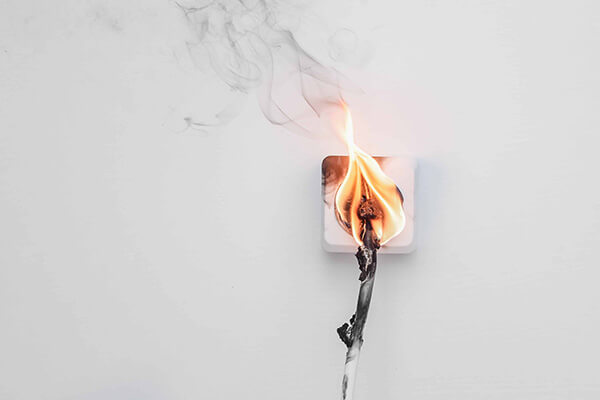
What to do:
When dealing with an electrical fire follow these basic steps.
1. Turn of the power supply:
If safe to do so, quickly access your circuit breaker and flip the switch cutting off all power. Turning off the power source removes the ignition for an electrical fire and this may cause the fire to die down.
2. Use the CORRECT fire extinguisher:
- When the power is still connected: In the case of an electrical fire when you have been unable to disconnect the power supply, you must use a Class E / Class ABE fire extinguisher, this contains a chemical that will smother the fire when it comes into contact with the flame, as opposed to water which acts as a conductor, potentially spreading the flame.
- When the power is cut: If you have been able to safely disconnect the power, since electricity is no longer able to be conducted you can use a standard water-based extinguisher to put out the residual flames.
- If the fire is uncontrollable (000): If the fire has grown too intense or is not able to be controlled by extinguishers alone, evacuate the premises! Leave your belongings and ensure you and your family are all safe. Stop, drop, roll, and call emergency services!
3. Call emergency services:
Even if you manage to put a fire out, smouldering internal objects/wires can still cause fires to start up again later. After a fire, call emergency services and have them come check on your premises to ensure the house is safe to be habited again.
4. Call a professional electrician:
Before turning on the power again and starting another fire, call a local professional electrician to identify the source of the electrical fault and fix it. They’ll ensure the house is up to spec, and safe to have electricity running.
Prevention
In Western Australia, an electrical compliance or safety check is required before selling or renting a property. This ensures that wires and power points throughout the building are safe and in good order.
Don’t ignore signs of wear and tear in both electrical wiring and electrical appliances. If you see something, say something and remove the item from use or call a licensed electrician to fix it.
If there’s fallen power lines
Fallen power lines by their very nature pose a significant threat to life and property, and consequently should be dealt with cautiously.
What to do:
- Maintain a distance of 10-15 meters where possible: Power lines supply many houses with power, so they have more than enough electricity to fry things, even from a distance. Keep an eye out for any conductive materials in the area that you should keep distance from (Large tree branches, large puddles of sitting water, vehicles, or metal fencing in the area.) Even broken power lines may still be live and there’s risk surrounding materials are live too.
- Avoid objects also in contact with the fallen power line: Objects that are in contact with a fallen power line may not ordinarily be a good conductor (such as trees or branches), but with the high voltage generally associated with power lines, they can become live with enough electricity to cause lethal harm. Never touch anything already in contact with a fallen power line – even if it seems like a poor conductor.
- Call Emergency Services (000): Call the authorities and let them know what has happened, they may already know, they may not, but regardless you’ll have done the right thing and will receive the correct instructions to deal with the situation at hand.
- Contact your local power authority: If you live in WA’s South West or Perth, call Western Power. Otherwise, see this list of who to call to repair fallen power lines.
If the power lines are private power lines, call a professional emergency electrician that deals with private power poles and infrastructure such as Sarros Electrical, or your local 24/7 electrician to get you back up and running as safely and as quickly as possible.
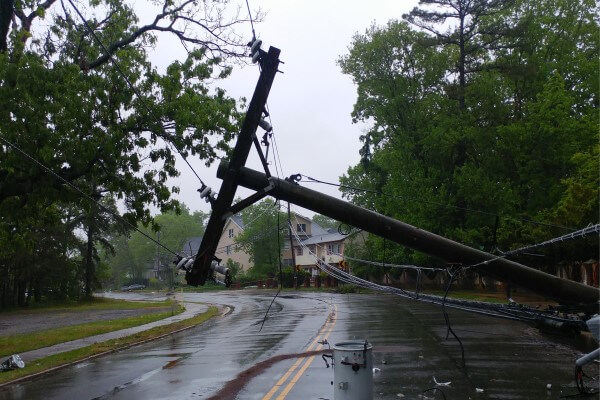
Prevention:
Unfortunately, not much can be done to prevent fallen power lines as this often happens during extreme weather events or disasters.
Checking the condition of your private power poles will ensure things are in working order. If ever you notice something on public power lines, report it to your local power authority so they can assess the situation and fix it.
If your property is flooded
Water is an excellent conductor of electricity and as a result, is a major cause for concern – especially during flood.
What to do:
- Confirm the property is safe to enter: Your local authorities should let you know whether it’s safe to return to your house and start repairs!
- Ensure the power is off: Check to ensure town power is turned off. At the switchboard, if safe to do so, turn off the power (whether or not there’s already a power outage). If the fuse box has evidence of water damage, arcing (sparking electricity) or other signs of overheating, DO NOT TOUCH the fuse box and call your local electrician. Remember that solar power can present an electrical hazard even when the main power is off. Isolate the solar power if it is safe to do so.
- If you’re able and it’s safe to do so, disconnect all electronics: Unplug all water damaged electrical appliances and move portable ones away from the affected area. You might be able to save some appliances and avoid future electrical issues.
- Arrange for the disconnection of other services: Suppliers for things such as gas and any other services that may not be in use whilst the house is being fixed up can be contacted, by disconnecting them temporarily you can save money and avoid other safety concerns.
- Contact your insurance and emergency electricians: These individuals are in the best position to sort you out and get you back to normal living asap. Make sure they’re reputable and insured themselves!
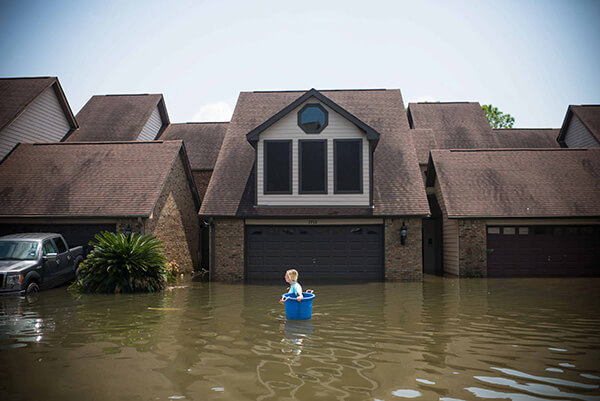
Prevention
Unfortunately, you can’t often prevent flooding, but if there is risk of imminent flooding, you can pre-emptively unplug all electrical appliances and turn off your power. You can move appliances to higher ground and place sandbags around your home.
Doing so will potentially save you thousands on replacing appliances and reduce your risk of exposure to electric shock.
If your RCDs keep tripping
Okay yes, a circuit breaker’s job is to break the circuit… but this should be a rare occurrence rather than a regular one, if you find yours breaking every couple of hours or even minutes, you can be sure something’s likely gone awry.
- Unplug/Turn off appliances: You may realise as you start disconnecting appliances that your RCD stops tripping. This indicates that either you were drawing too much current from any one power point at a given time or that appliance is faulty. Contact the manufacturer for faulty appliances for guidance on what to do. If multiple appliance causing too much draw is the issue, try and spread the load to separate circuits in the house.
- Check for damage: If the circuit keeps tripping, look throughout your house and see if you can spot any damage to wires or power points, signs of burning or melting, if you do contact an electrician right away!
- Identify the tripped breaker: Try and find the tripped breaker and reset it, it if it trips again, it’s time call in the professionals to find the fault or install new RCDs. It may be a faulty RCD switch, or it may be a fault within the circuit and the RCD switch is protecting you from danger.
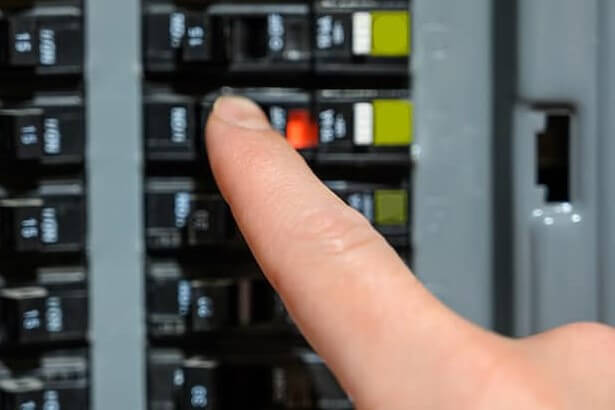
If your power points are burnt
Is your power point melted, brown, or black with signs of singeing or burning? Has the outlet started to warp? Is there a smell of melted plastic in the air? Burnt power points are indicative of extreme heat, generally caused by 1 of 2 issues.
- Damaged or incorrectly installed wiring: If the wiring has been damaged or has not been installed correctly, unprecedented amounts of electricity can flow through the circuit if it shorts. This can generate too much heat, singeing everything in the surrounding area.
- Circuit overload: This depends on what appliance, or how many are plugged into the socket. The circuit may begin to draw more power than what it was rated for. This increases the amount of heat in the circuit. For an explanation on keeping yourself safe with power boards read on here.
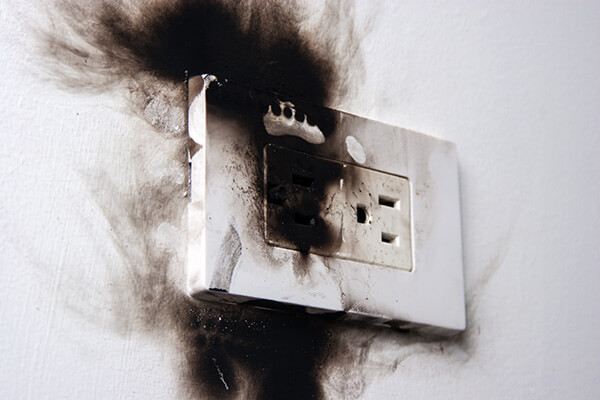
As we’ve mentioned before singed outlets are a precursor to burning outlets, and although the damage might not look serious because there is no visible flame, there could be a very real problem smouldering below the surface.
If your power points are burnt or melted, call your local electrician as soon as possible! If you live in Western Australia’s South West, the Peel or Perth, call us – Sarros Electrical.
If there’s a power outage
Power outages are commonly caused by a variety of reasons such as storms, load shedding or downed power lines or damaged electrical infrastructure.
At other times, the power failure may be coming from within your own home!
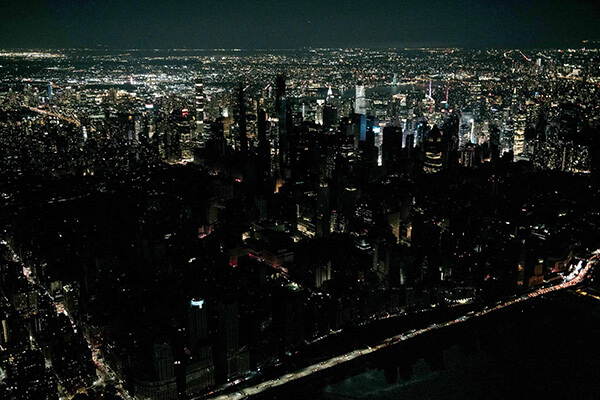
What to do:
- Ascertain if the power outage is communal or just you: Are the streetlights on? Do your neighbours have electricity? If so, it may be that there’s an electrical fault within your property.
- Call the relevant power authority: If the power outage is from outside your home, you can check online or call your local power authority to report the outage. If the power outage is your property only, check that you’ve paid the power bills then call your local trusted electrician to come and investigate that cause.
A tip:
Turning off your power from the switchboard during a power outage can save your electrical appliances and circuits a lot of stress when the power comes back online.
Often there’s a surge of power when the power is reconnected (imagine everyone’s appliances ready to turn back on again). Once the power is back on, just wait a minute then turn on your own power for a smoother transition.
When to call an emergency electrician
Electrical emergencies are often inherently dangerous, but they don’t have to cause harm as long as you give them the respect they deserve and remain alert with safety in mind.
Sometimes though, things are beyond our reasonable ability and control to handle safely. In Australia, all electrical work and repairs need to be done by a fully licensed electrician. So if you sustain any damage to the electrical infrastructure on your property, call a reliable emergency electrician to get back and powering along safely.
Sarros Electrical is Western Australia’s emergency electrician of choice because we’ve got you covered 24/7. With years of experience in emergency repairs and electrical fault finding, you can rest assured that we’ll get your powering along safely in no time – simply give us a call on (08) 9226 7900!

